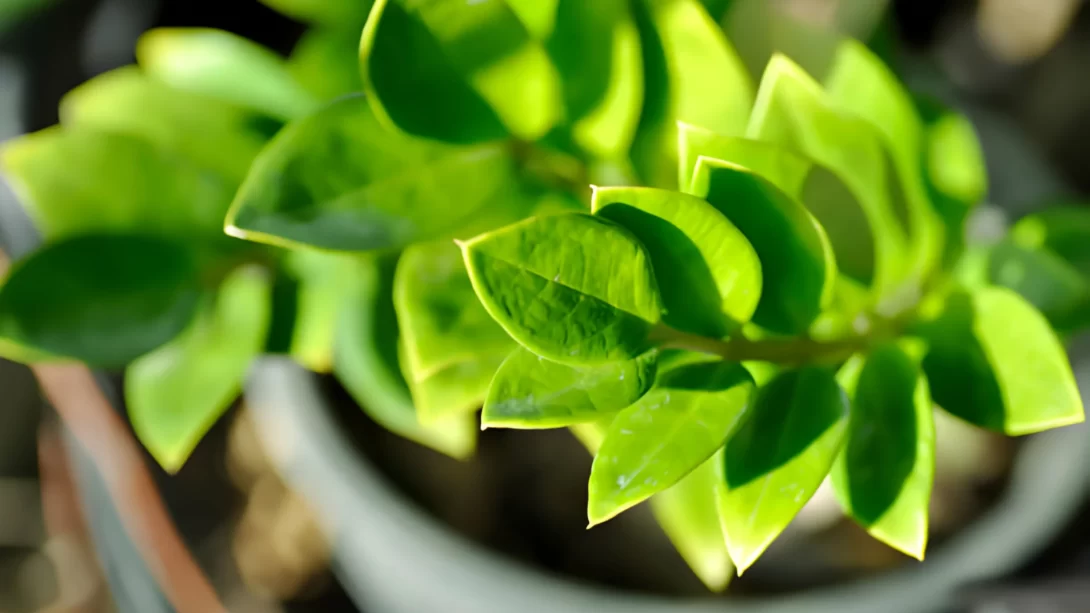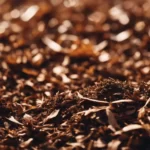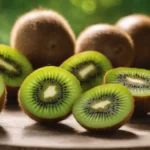The ZZ plant (Zamioculcas zamiifolia), known for its hardiness and attractive foliage, is a popular choice for indoor gardening. However, owners often encounter a common issue: yellowing leaves. This can be concerning, as it’s a sign that the plant is not in optimal health. Understanding the reasons behind this can help in effectively caring for your ZZ plant.
ZZ Plant Basics
ZZ plants are favored for their ability to thrive in a range of indoor conditions and their low maintenance nature. They are characterized by their glossy, dark green leaves and robust rhizomes from which the leaves grow. The health of these leaves is crucial as they are the primary site for photosynthesis and a key indicator of the plant’s overall well-being.
Common Causes of Yellowing in ZZ Plants
Several factors can contribute to the leaves of a ZZ plant turning yellow. Identifying the cause is the first step in addressing the issue. The most common causes include overwatering, improper light conditions, nutrient imbalances, temperature stress, and issues related to the root system and potting medium.
Overwatering and Watering Issues
Overwatering is one of the most common reasons for yellowing leaves in ZZ plants:
- Signs of Overwatering: Yellowing leaves, especially if accompanied by a mushy stem base or a rotten smell, typically indicate overwatering. ZZ plants store water in their rhizomes, making them particularly susceptible to excess moisture.
- Proper Watering Practices: The key to watering ZZ plants is allowing the soil to dry out between waterings. These plants are drought-tolerant and prefer less water to too much. Checking the moisture level of the soil before watering can prevent overwatering.
Ensuring good drainage in the pot is also crucial. Using pots with drainage holes and well-draining potting mix can help prevent water accumulation around the roots.
Light and Environmental Factors
Lighting conditions play a significant role in the health of ZZ plants:
- Insufficient Light: While ZZ plants are tolerant of low light conditions, prolonged exposure to very low light can lead to yellowing leaves. This is a sign that the plant is not receiving enough light to perform photosynthesis effectively.
- Excessive Light: Conversely, too much direct sunlight can scorch the leaves, causing them to turn yellow or brown and become crispy.
ZZ plants thrive in bright, indirect light. Finding a balance in lighting is key – a spot near a window with filtered light is often ideal.
Nutrient Imbalances
Nutrition is another factor that affects the health of ZZ plants:
- Deficiencies: Nutrient deficiencies, particularly nitrogen, can cause the leaves to turn yellow. This can happen if the plant has been in the same soil for an extended period without fertilization.
- Overfertilization: On the other hand, too much fertilizer can lead to a buildup of salts in the soil, which can also cause yellowing leaves.
Using a balanced, water-soluble fertilizer diluted to half strength every few months during the growing season can provide the necessary nutrients without overdoing it.
Temperature Stress
ZZ plants prefer a consistent and moderate temperature range:
- Cold Stress: Exposure to temperatures below 45°F (7°C) can damage the plant, leading to yellowing leaves. Cold drafts from windows or doors in winter can also be harmful.
- Heat Stress: High temperatures, especially in combination with direct sunlight, can stress the plant.
Keeping your ZZ plant in a room with a stable temperature, away from cold drafts and direct heat sources, will help maintain its health.
Root Health and Potting Medium
The condition of the roots and the quality of the potting medium are crucial for the health of ZZ plants:
- Root Health: Poor root health, often due to overwatering, can lead to yellowing leaves. Healthy roots should be firm and white or tan, not black or mushy.
- Potting Medium: A potting medium that doesn’t drain well can cause water to accumulate, leading to root rot. A well-draining medium, such as a mix designed for succulents, can help maintain root health.
Regularly checking the roots and refreshing the potting medium every couple of years can prevent problems associated with poor root health and inadequate soil conditions.
Pest Infestations
Pests can also be a reason for the yellowing of ZZ plant leaves:
- Common Pests: ZZ plants can be susceptible to pests such as spider mites, aphids, and mealybugs. These pests feed on the sap of the plant, weakening it and causing yellowing leaves.
- Identification and Treatment: Signs of pest infestations include visible bugs, webbing, or sticky residue on the leaves. Treatment options include wiping the leaves with a soapy water solution, using neem oil, or applying an appropriate insecticide.
Regular inspections and early intervention are key to preventing and controlling pest infestations in ZZ plants.
Natural Aging Process
It’s important to recognize that yellowing leaves can sometimes be a part of the natural life cycle of a ZZ plant:
- Older Leaves: Older leaves at the bottom of the plant may turn yellow and die off as part of the natural aging process. This is normal and allows the plant to focus its energy on new growth.
- Differentiating Aging from Other Causes: If the yellowing is occurring only on the older leaves and the rest of the plant looks healthy, it is likely just natural aging. However, if multiple leaves or newer leaves are turning yellow, it may indicate one of the issues previously discussed.
Understanding this natural process can help in accurately diagnosing and treating problems with your ZZ plant.
Disease and Infections
Diseases, often related to care issues, can lead to yellowing leaves:
- Root Rot: As with overwatering, root rot due to fungal infections can cause leaves to turn yellow. Ensuring proper watering and drainage is key to prevention.
- Fungal and Bacterial Infections: Leaf spot diseases and other infections can cause yellowing and browning of leaves. Maintaining a clean environment and avoiding overhead watering can help prevent these issues.
If you suspect a disease, isolating the affected plant and treating it with an appropriate fungicide or bactericide can be beneficial.
Conclusion
Yellowing leaves in a ZZ plant can be caused by a variety of factors, including watering issues, improper light conditions, nutrient imbalances, temperature stress, pest infestations, natural aging, and diseases. Understanding and addressing these factors is crucial for the health of your ZZ plant. Regular monitoring, proper care, and maintenance are key to preventing and treating these issues, ensuring that your ZZ plant remains a vibrant and attractive feature in your home or office. Remember, each plant is unique, and tailoring your care approach to its specific needs will yield the best results for a healthy and thriving plant.




